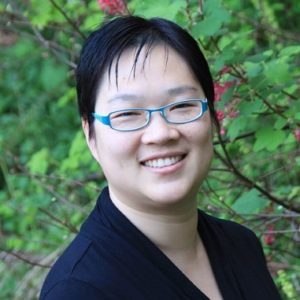
Kam Yee is an aerospace geek, in the very best sense of the word. “I LOVE aerospace. I used to teach at a local aerospace museum. I have a few dozen student pilot flight hours under my belt. Nothing makes me happier than sitting by the airport while studying aviation charts,” says Yee, a drone pilot and entrepreneur. As the founder of BeaconSkySurvey, an aerial mapping and surveying services company, with a Master’s degree in Space Studies, Yee knows exactly what it takes to be a successful woman in the drone industry.
She also knows how few of them are out there. In an analysis of the FAA’s 2016 civil airmen statistics, Yee found that fewer than 4% of remote pilot certificates are held by women.
The low representation of women isn’t unique to drones: the Airline Pilots Association (ALPA) says that women make up only about 5% of their more than 50,000 members. “It’s no secret that historically women are marginalized from the aerospace industry,” says Yee. “In that context, it’s not surprising at all that we have a low number of women with FAA certified remote pilot licenses.”
Yee says that the problem isn’t only one of education, but one of professional environment. “Despite cultural pressures that discourage girls and women be interested in aviation, we know that many women and girls still pursue it as a career,” says Yee. “The NSF-funded 2012 study Stemming the Tide: Why Women Leave Engineering found that there is a significant attrition rate of women engineers after they successfully exit the academic STEM pipeline. Even women who spent resources to go to college and have a career in engineering find themselves being socially isolated at the work place and professionally held back.”
Asked what she sees as a potential solution to the gap, Yee says that the remedy is two-fold: hiring and retention. Practicing inclusive hiring and recruitment strategies will help, but promotion opportunities and equal pay are the best way to keep women in the industry. “Inspiration and mentors can’t keep us in the industry,” says Yee. “Steady honest paychecks and professional development keep women in the drone industry.”
A good scientist, Yee points out that the data set has limitations which might leave room for some optimism. “Part 107 has only been active since Aug 29, so this is only data for 4 months,” she says. “I anticipate a slightly different picture in the 2017 data set, hopefully a little more representation of our amazing women.” Additionally, she points out that as the certification process was easier for those already holding a Part 61 pilot’s license – mostly men, as referenced above – those pilots may have had a greater representation in the early figures.
Despite the low numbers, Yee says that the drone industry can be a great space for women entrepreneurs.
“Operating as a drone service provider is a relatively low barrier to entry small business. Thanks to the internet, women do not need to significantly disrupt family life or a day job to develop their skills to enter this business…Women and minorities are also increasingly starting our own business as a way to bypass the “traditional” barriers and discrimination that we face in work places. “
Miriam McNabb is the Editor-in-Chief of DRONELIFE and CEO of JobForDrones, a professional drone services marketplace, and a fascinated observer of the emerging drone industry and the regulatory environment for drones. Miriam has penned over 3,000 articles focused on the commercial drone space and is an international speaker and recognized figure in the industry. Miriam has a degree from the University of Chicago and over 20 years of experience in high tech sales and marketing for new technologies.
For drone industry consulting or writing, Email Miriam.
TWITTER:@spaldingbarker
Subscribe to DroneLife here.